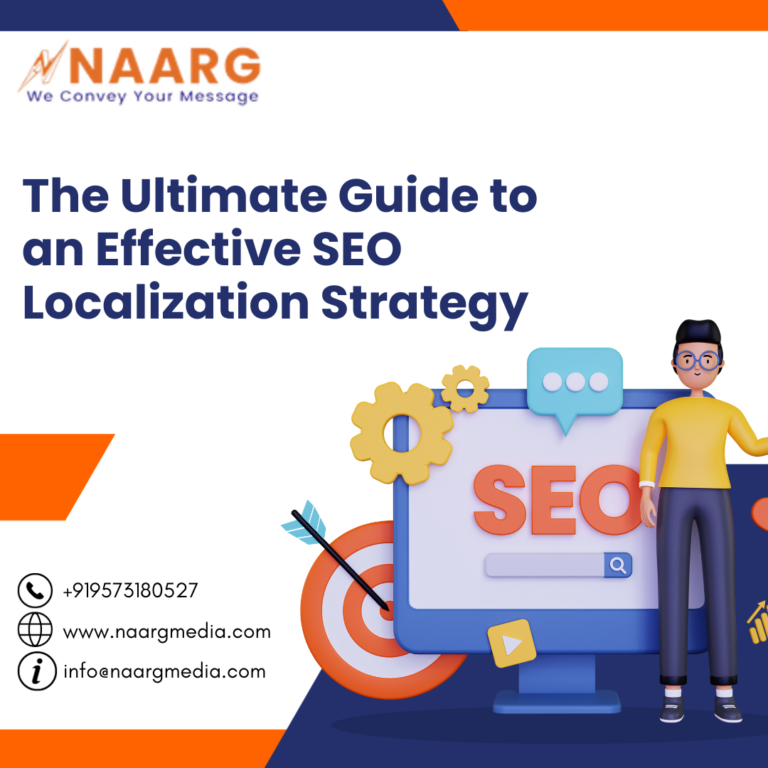The ultimate success of your business depends on its ability to reach a target audience. Search engine optimization and a proper SEO localization strategy play a pivotal role in this endeavor. Helping your business not only increase online visibility but also engage with a diverse target audience But what is SEO localization? SEO localization is the process of increasing traffic to your website with organic search results in the target language.
However, this power of localized SEO requires a targeted approach that speaks directly to the target audience. This is where the SEO localization strategy steps in and becomes the ultimate game-changer for your business to conquer the global market.
Did you know that 98% of people read online reviews for any business? That’s how essential the SEO localization strategy is. Just think of SEO localization strategy as a game of chess, where every move matters. SEO localization strategies require careful planning and execution.
In this blog post, we will explore the importance of SEO localization strategy, the fundamentals, and the challenges of SEO localization strategy.

Importance of SEO localization strategy
SEO localization strategy is of paramount importance if you want to expand your online presence and reach an international audience. When you adapt localized SEO to your target market, you can be assured that your content resonates with the target audience, leading to increased visibility and engagement. Now let’s explore the importance of an SEO localization strategy for your business.
1. Enhanced Relevance
When you localize your SEO strategy, you tailor your content according to the target language and culture of your target audience. This enhances the relevance of your website and business and makes them more appealing to the target audience. Consequently, local search engines will recognize your localized content as valuable to a target audience, which will boost your local content and rank higher.
2. Improved user experience
The localization process not only includes translating content but also factors like user interface, website design, and local preferences. All these, when localized, result in an improved user experience, which leads to higher user engagement, longer website visits, and increased conversions.
3. Increased visibility
Local search engines prioritize localized content in their search results. By optimizing your content for local keyword research and ensuring it complies with localized SEO practices, you increase your chances of ranking higher in local search engine result pages.
How do you create an SEO localization strategy?
Creating an effective SEO localization strategy is essential for your business if you are looking to target a specific region or a local target market. SEO localization strategy involves optimizing your website and content to rank higher in local search engines that resonate with local audiences. Here is a list of steps to create an effective SEO localization strategy.
1. Market research and local audience analysis
The first step for any SEO localization strategy is to thoroughly research your market base, i.e., your target audience, their target language, and their cultural background. Also, research thoroughly about your local competitors to understand their SEO strategies.
2. Keyword Research
Conduct thorough keyword research for your target market and target language. You can utilize keyword research tools to identify the most relevant and high-traffic keywords. Also, consider using long-tail keywords and localized search items.
3. On-page SEO optimization
Always optimize your meta titles and descriptions with local keywords. Use tags to indicate language and regional targeting for search engines. And ensure the use of markup to provide context to search engines about your content’s local relevance.
SEO localization strategy is not a one-time effort but an ongoing process to help you improve your online presence in target markets.
Fundamentals of SEO localization
Before understanding the fundamentals of SEO, let’s first understand what SEO localization is. SEO localization is the practice of optimizing your website for multilingual websites and online content to make it more accessible and relevant to users in different target markets. It has become essential for your business if you want to expand your global reach. Now, come back to the fundamentals of SEO localization. Here we have listed a few fundamentals of SEO localization.
1. Localize Content
Accurate translation and localization of your content are essential. You can utilize professional translators or native speakers who have a thorough knowledge of the local language. This ensures that linguistic and cultural nuances are maintained. The translated and localized content should not only be grammatically correct but also culturally relevant.
2. Website loading speed
Always optimize your website’s loading speed for the target market. When we talk about website loading speed, it includes choosing the right hosting provider, optimizing images, and reducing unnecessary elements that can slow down the website.
3. User Experience
Try to prioritize the user experience by ensuring that the local content on your website is intuitive and easy to navigate for local users. This also includes offering a seamless payment process for e-commerce sites, if applicable.
Once you incorporate these fundamentals into your SEO localization strategy, it will increase the visibility of your website and business in your target market.
Common challenges in SEO localization
Everything comes with its own set of challenges. And SEO localization also comes under the radar of some challenges that require careful consideration. Some of the common challenges that we see in SEO localization are listed below.
1. Language Barriers
One of the primary challenges in SEO localization is language barriers or language differences. When you expand your business to a new target market, you need to overcome language barriers to ensure that your content is not only translated accurately but also culturally adapted for the target audience.
2. Cultural Sensitivity
When you adapt content to local customs, traditions, and cultural nuances, it can be a complex process. Failing to do so may result in content that seems irrelevant or even offensive to the target audience.
3. Keyword research
Conducting comprehensive keyword research for a specific target market can be difficult, especially when you are not familiar with the local language. And on top of that, identifying the most relevant keyword can turn out to be a time-consuming task.
Addressing these challenges can be a daunting task and requires expertise, SEO knowledge, cultural awareness, and a commitment to understanding the specific needs and preferences of the local audience.
We are Naarg, a global language services provider, supporting various businesses in reaching a global audience in any language. We strive to provide professional translation and localization services to all our clients across the globe.
Contact us today to learn more about our professional translation services.


I like the valuable info you provide in your articles. I will bookmark your blog and check again here regularly. I’m quite sure I will learn lots of new stuff right here! Best of luck for the next!
Thank you Ram! Glad content is helpful.